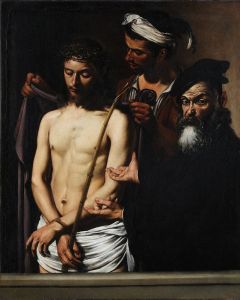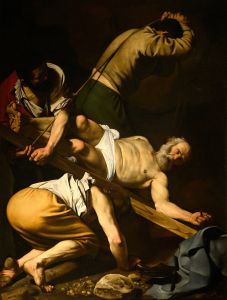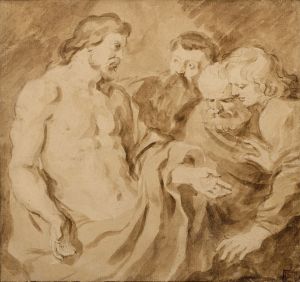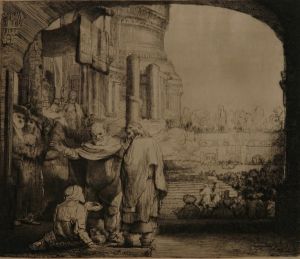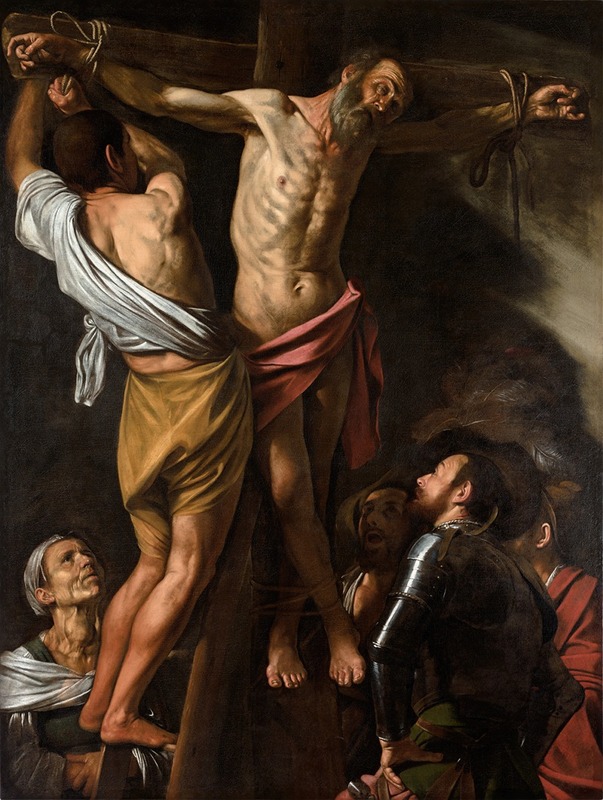
The Crucifixion of Saint Andrew
A hand-painted replica of Caravaggio’s masterpiece The Crucifixion of Saint Andrew, meticulously crafted by professional artists to capture the true essence of the original. Each piece is created with museum-quality canvas and rare mineral pigments, carefully painted by experienced artists with delicate brushstrokes and rich, layered colors to perfectly recreate the texture of the original artwork. Unlike machine-printed reproductions, this hand-painted version brings the painting to life, infused with the artist’s emotions and skill in every stroke. Whether for personal collection or home decoration, it instantly elevates the artistic atmosphere of any space.
The Crucifixion of Saint Andrew is a painting by the Italian Baroque master Caravaggio, completed in 1607. The work is an oil on canvas and is currently housed in the Cleveland Museum of Art in Cleveland, Ohio, United States. It is one of Caravaggio's later works and reflects his mature style, characterized by dramatic use of light and shadow (chiaroscuro) and intense emotional realism.
The painting depicts the martyrdom of Saint Andrew, one of the twelve apostles of Jesus Christ. According to Christian tradition, Saint Andrew was crucified on an X-shaped cross, known as a saltire, in the city of Patras, Greece. Caravaggio captures the moment of the saint’s crucifixion, emphasizing the physical and emotional tension of the scene. Saint Andrew is shown bound to the cross, his body twisting as he gazes upward, seemingly in a state of spiritual ecstasy. His expression conveys both suffering and divine acceptance of his fate.
The composition is dynamic, with the figures arranged in a tight, dramatic space. Surrounding Saint Andrew are several other figures, including a Roman soldier and onlookers. The soldier appears to be in the act of tightening the ropes that bind the saint to the cross, while the onlookers exhibit a range of emotions, from curiosity to concern. The use of light in the painting is particularly striking, with Saint Andrew’s body illuminated against a dark background, drawing the viewer’s attention to his suffering and sanctity.
Caravaggio’s ability to depict human emotion and physicality with such realism was groundbreaking for his time. His approach to religious subjects often emphasized the humanity of the figures, making them relatable to viewers. In this painting, the raw emotion and physical detail create a powerful narrative that invites contemplation of faith, sacrifice, and redemption.
The provenance of the painting is well-documented. It was commissioned by the Spanish viceroy of Naples, Pedro Téllez-Girón, 3rd Duke of Osuna, and later entered the collection of the Cleveland Museum of Art. The work has been studied extensively for its technical and stylistic elements, which highlight Caravaggio’s mastery of naturalism and his innovative use of light.
This painting is considered an important example of Caravaggio’s late period and his ability to convey complex religious themes with immediacy and emotional depth.







